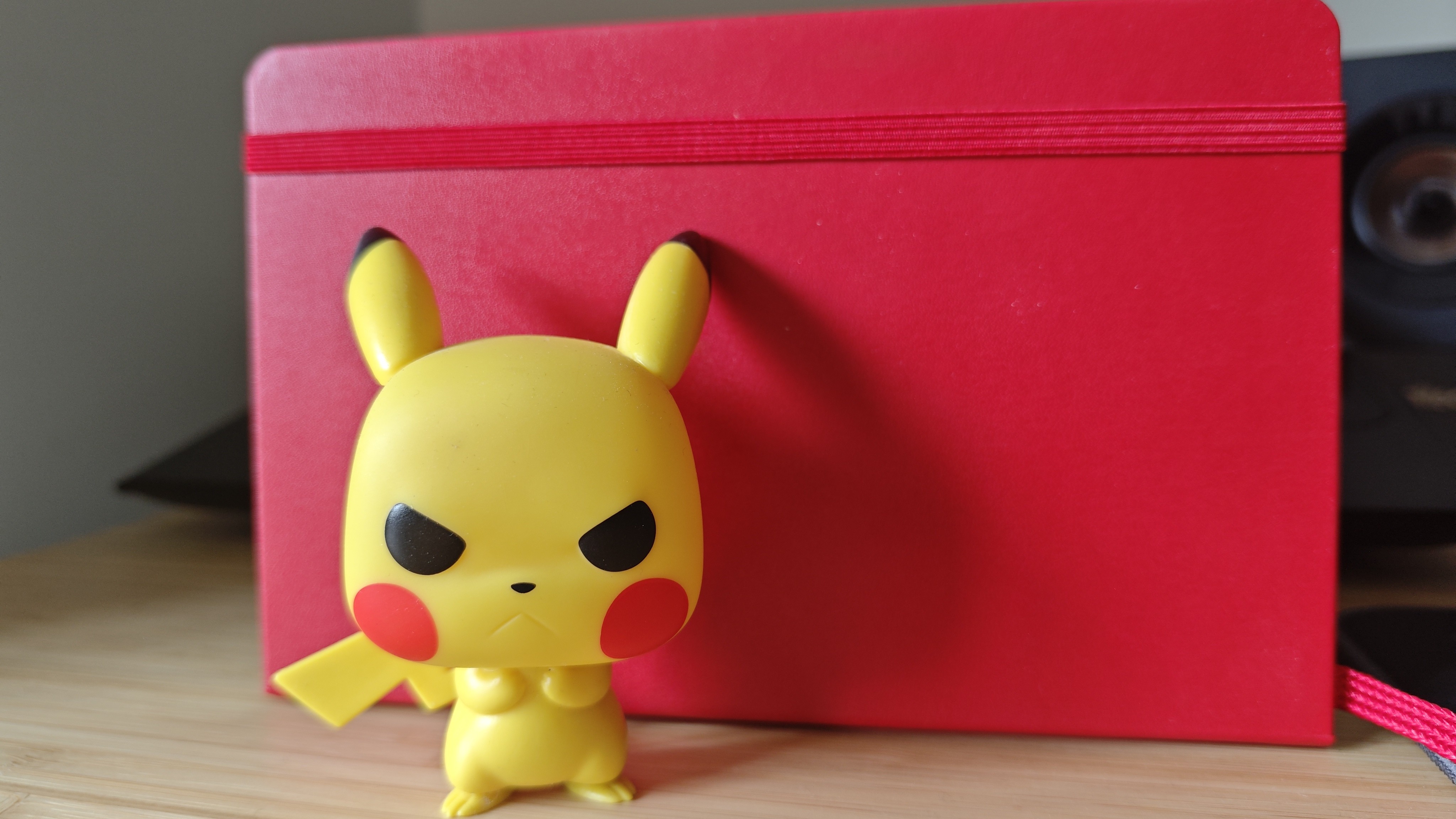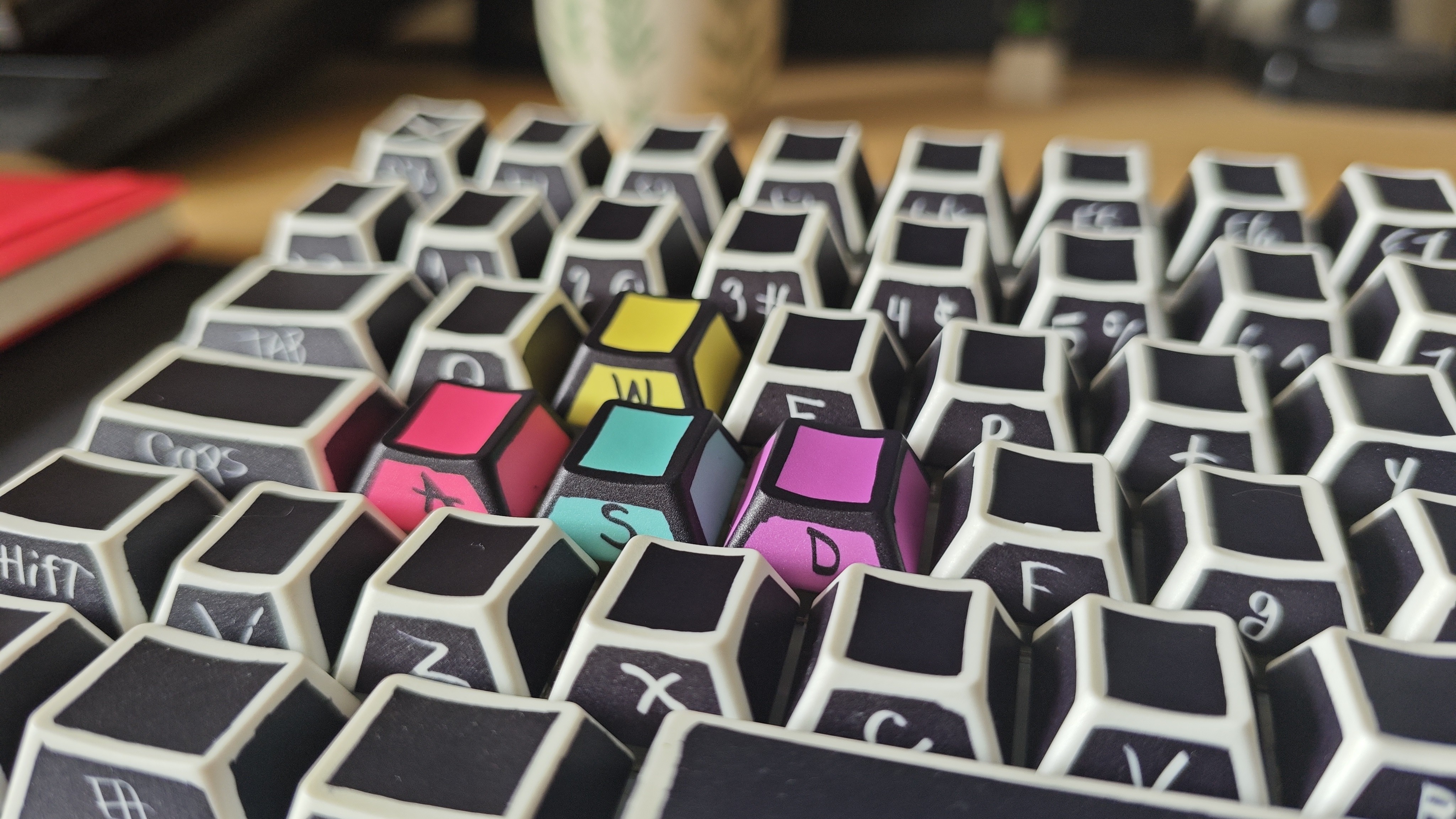Why you can trust GamesRadar+
Our experts review games, movies and tech over countless hours, so you can choose the best for you. Find out more about our reviews policy.
At under $500, the Poco F7 Pro has plenty of potential straight from the outset. After two months with the device, I’m impressed with just how well this Xiaomi device handles its flagship competition.
The device’s priorities align it with the world of the best gaming phones more so than everyday flagship handsets. There are some noticeable sacrifices in camera quality and other quality-of-life features like wireless charging, but that’s traded out for impressive battery life, a slick display, and a solid (if slightly older) chipset chugging away under the hood.
There’s power, grace, and style in this device, and while it lacks gaming-specific software and hardware features it could well give Nubia something to think about in the value department.
That said, this isn’t a US phone. It’s possible to have one shipped to the states, but there’s no guarantee that it will run on major carriers.
|
Price |
$499 / £499 |
|
Display |
6.67-inch OLED, 120Hz, 1800 nits, 1440 x 3200, 526 ppi |
|
Chip |
Qualcomm SM8650-AB Snapdragon 8 Gen 3 |
|
RAM |
12GB |
|
Storage |
256GB | 512GB |
|
OS |
Android 15 |
|
Cameras |
50MP Wide, 8MP Ultra Wide, 20MP Front |
|
Battery |
6,000mAh |
|
Water resistance |
IP68 |
|
Dimensions |
160.3 x 75 x 8.1mm |
|
Weight |
206g |
Design

The Poco F7 Pro keeps things streamlined with a sophisticated monotone design that keeps things interesting by varying texture rather than color. That’s in stark contrast to the bold yellow aesthetics of previous releases, but one that sits inline with the move towards more understated gaming form factors in recent years. I received the black model, though a crisp silver and striking blue are also available, which also comes with a dark gray silicone case in the box.
This is a flat-backed phone but it’s certainly not harsh. In contrast to the similarly-proportioned RedMagic 9S Pro’s hard angular corners, the Poco F7 Pro has a neatly rounded design that saves the palms and keeps aesthetics soft. Turning it over, the glossy section towards the top also features a circular pattern running underneath the glass cover, adding an extra level of dimensionality.
That glass only extends down slightly past the camera bump, with the rest being covered in a soft-touch matte finish. That saves fingerprints from completely ruining the experience (they will clog up the top panel) but also gives the phone a comfortable base to grip onto. It’s a little too smooth to provide high-quality grip (I certainly wouldn’t hold it over the toilet), but it’s easily cleaned and keeps the rear panel from feeling clammy during longer sessions.
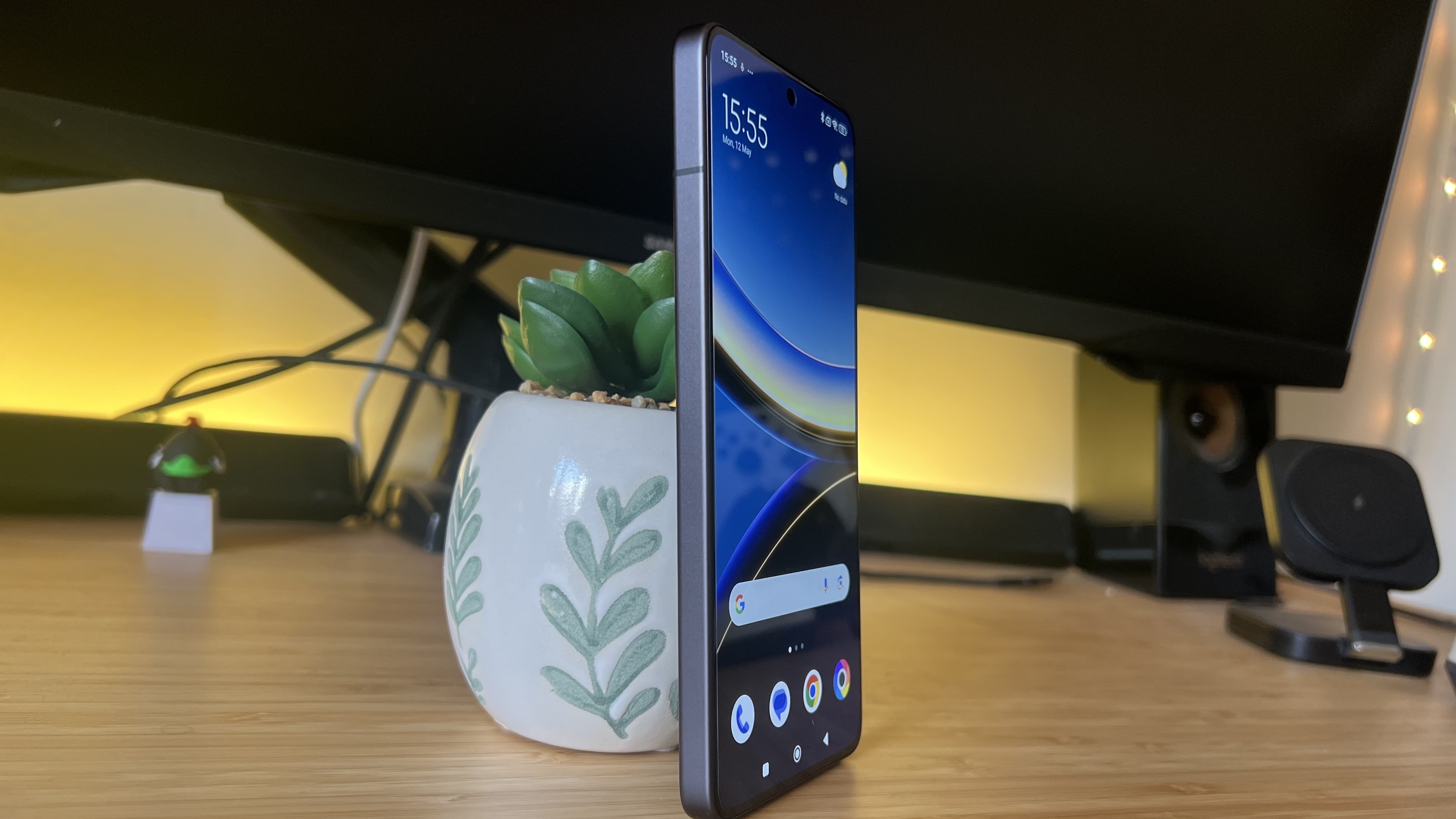
The perimeter is constructed from aluminum but it’s not the shiny, scratch-likely casing you might expect. Instead, the matte finish from the back extends around the edges, providing a soft feel that resists scuffs and fingerprints nicely.
Poco has also refreshed its durability with the F7 Pro. It now features a solid IP68 dust and water resistance rating, keeping it safe at depths of up to 1.5m for up to 30 minutes. That’s a rarity in the world of gaming phones, where brand usually prefer to keep exhausts open for enhanced cooling (which removes any chance of a seal). On top of that, the display and back glass are both Corning Gorilla Glass 7i.
Display
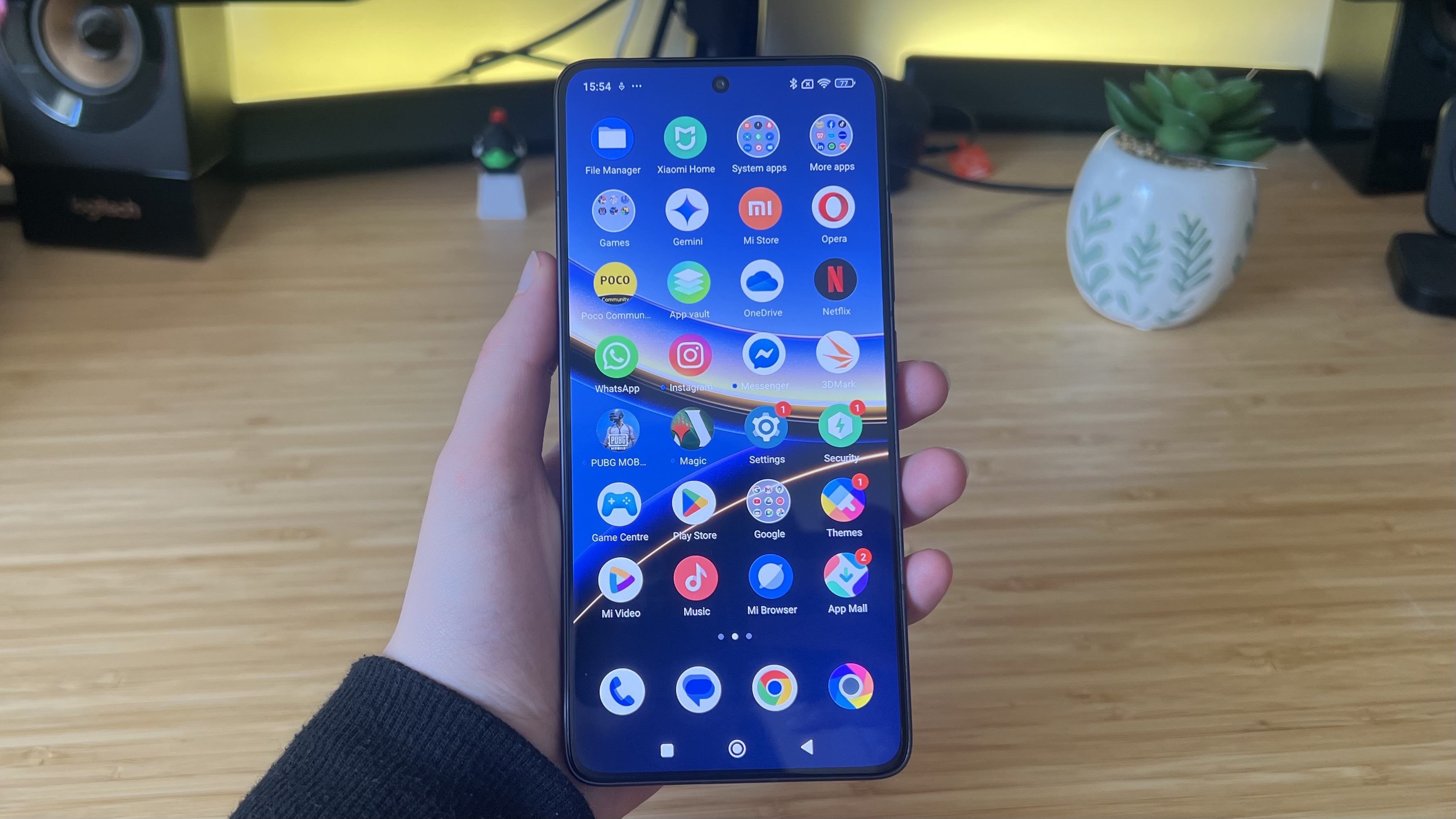
Up top we’ve got an incredibly crisp 3,200 x 1440 resolution OLED panel, with all the HDR functionality and high-speed refresh rates you could ask for. This is a particularly vibrant screen, offering rich colors and allowing for more muted tones with striking detail and precision.
That’s a QHD+ resolution that punches with the best of them, matching only high-end flagships like the Samsung Galaxy S25 Ultra and Xiaomi’s own 15 Ultra. Considering those are both four-figure models, and the Asus ROG Phone 9 Pro that sits at the top of our gaming phone rankings only clocks in at 2,400 x 1,080, that’s excellent value for money.
It’s also incredibly bright – too bright to use at full blast in anything other than direct sun. I’d take that over a dim display, especially considering it still manages to maintain both brightness and uniformity at a solid price point. Throw in full HDR support from Dolby Vision and more and you’ve got yourself an impressive screen.
That’s without taking the 120Hz refresh rate into account, a feature you’ll pay top dollar for in other models. This is a variable refresh rate, but it’s not quite as smart as other installations. There’s an adaptive mode, but it basically cycles between idle 60Hz settings and more power-hungry 120Hz gaming applications. You can, however, customize exactly which apps ramp things up to 100, which keeps things battery-friendly.
Cameras
The Poco F7 Pro doesn’t push its cameras as hard as more mainstream flagships, but your Instagram isn’t going to suffer for it. The main 50MP wide camera captures impressive detail with a particularly strong color range on display. In good light, there’s a fantastic dynamic range to these shots, with finer details of more complex subjects shining through accurately and without a processing fuzz on top.
Darker shots hold their own as well, managing to pick out an impressive level of detail from shadowy areas, and balancing saturation and black levels well.
The ultrawide gets a little spicier, introducing slightly more fuzz around the edges and losing some of the finer details of subjects. Keeping your shots clear is a little tricky without the autofocus, though it’s pretty easy to adjust most framing on the fly.
Software
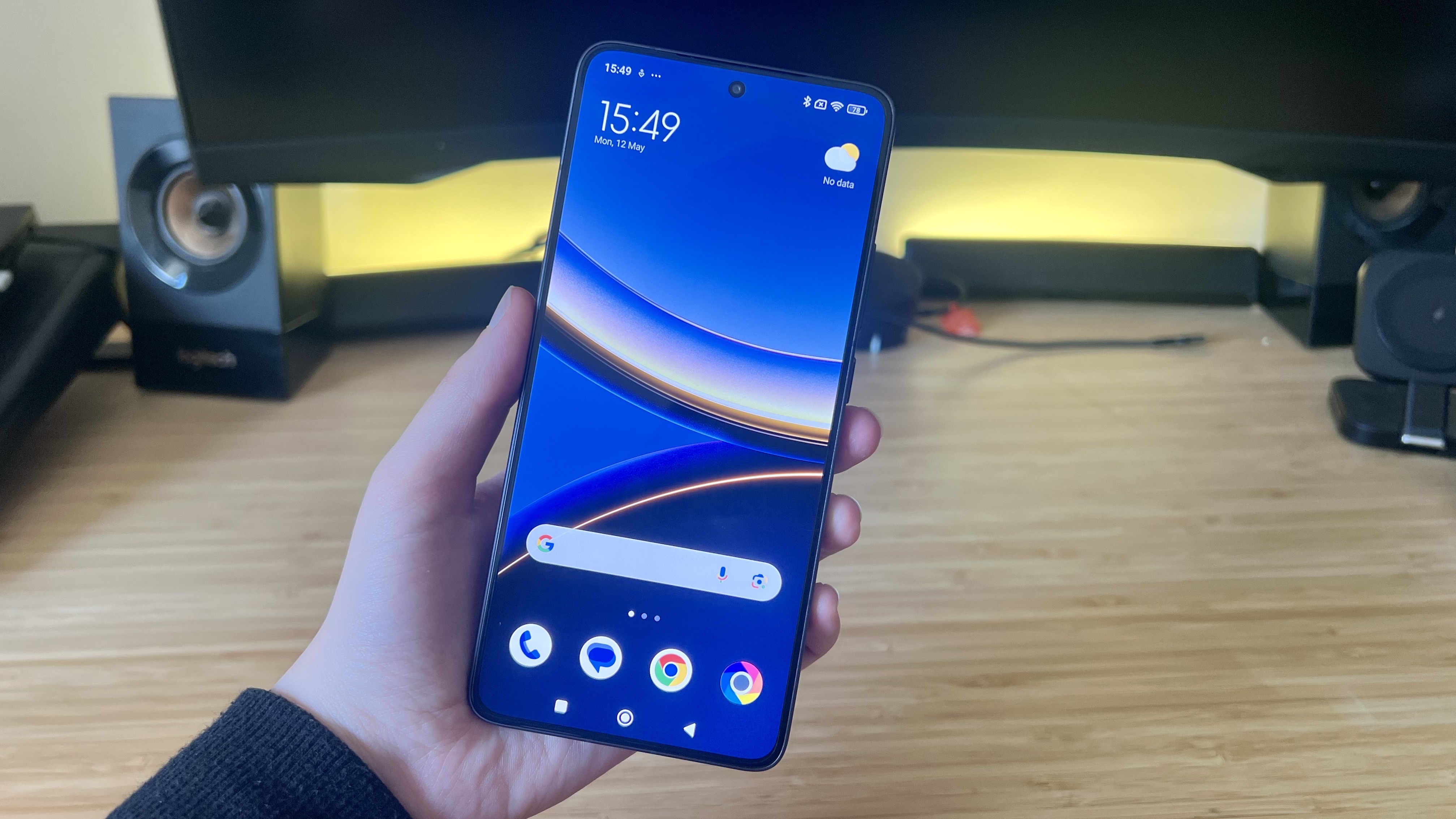
The Poco F7 Pro runs on Android 15 and HyperOS 2, the same as Xiaomi’s more premium flagships. The interface is nice and clean, it’s pretty much the same as any other Android home screen and menu system, with only a few pre-installed apps occupying the second page. One is a simple Poco news feed, another is a dedicated Xiaomi Mi store app, and the Opera browser is installed as well. Then there’s your usual roster of pre-installed capers, from Amazon to Booking.com.
Everything is where I would expect it to be, with plenty of wallpaper, layout, and drawer customizations available. That all runs nice and smoothly as well, I never noticed any jittering on the screen when moving between menus and apps, there were no translation issues, and deleting the bloatware apps was quick and painless.
You’re also getting access to Xiaomi HyperAI’s software tools, including image editing, speech recognition, and interpreting functionality. On top of that, though the phone also comes with Google Gemini pre-installed, which functions as it does anywhere else.
I didn’t find any quirks or bugs with the software or AI features in my day to day testing, and everything remained reliable and solid throughout the period.
Unlike Asus or Nubia’s gaming phones, the Poco F7 Pro doesn’t come with any gaming-specific software features. The former devices ship with dedicated apps to manage your game libraries, settings, and screenshots, while also providing finer controls over fans and performance. If you’re looking to get the most out of that Snapdragon chip, that kind of flexibility can take you pretty far.
Gaming
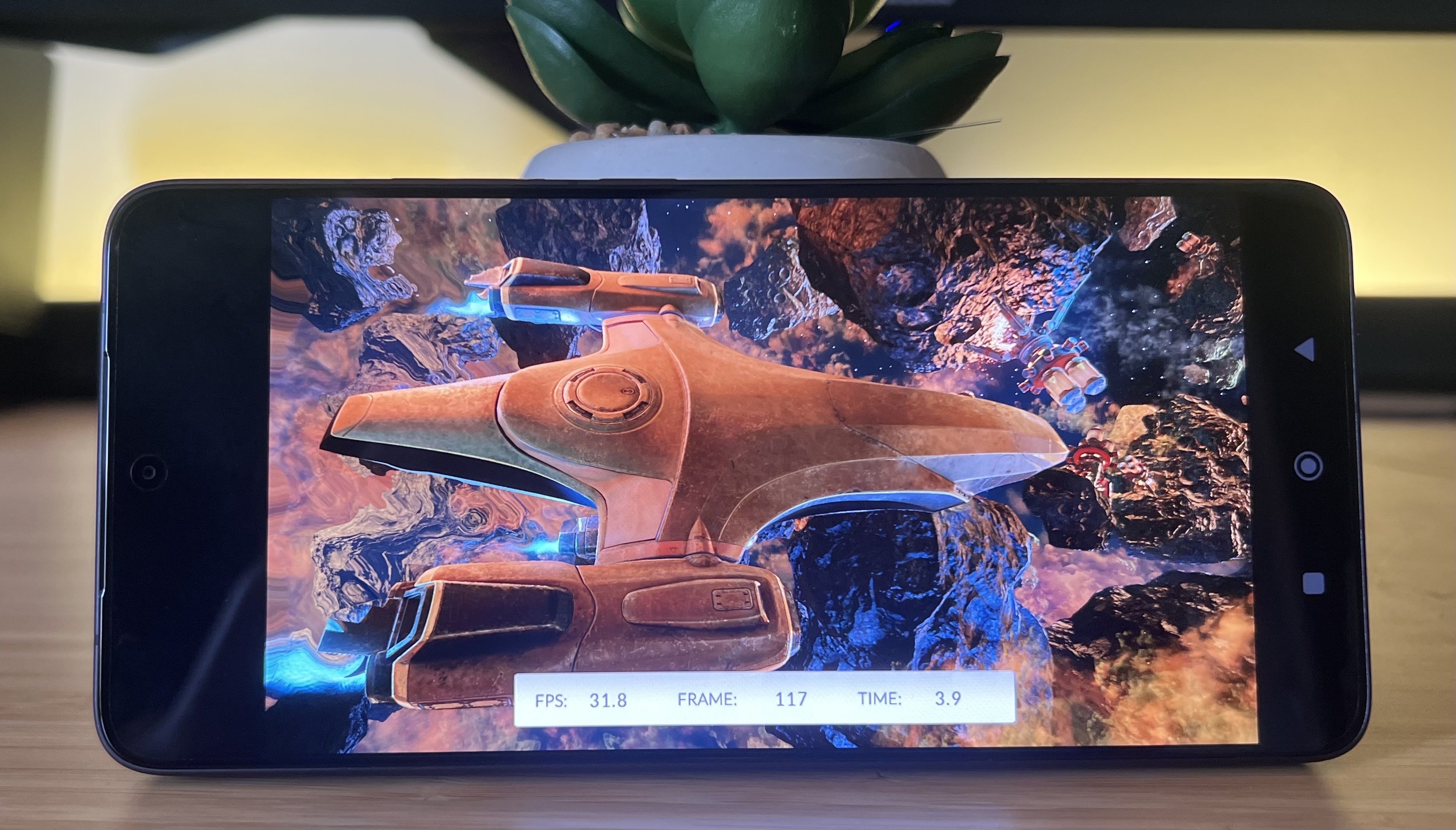
The Poco F7 Pro uses an older Snapdragon 8 Gen 3 chipset, which means it’s always going to be outpaced by the likes of the Asus ROG Phone 9 Pro with its Snapdragon 8 Elite. Its 3D Mark benchmark numbers also put it below the previous generation Asus phone and, more notably, the RedMagic 9S Pro. This latter device uses an overclocked ‘Leading Version’ of the same Snapdragon 8 Gen 3 chip to edge ahead in the numbers game, while only costing slightly more than the Poco F7 Pro.
That’s not to say this is a slouch, in fact I’m pleased with this value proposition overall. The Poco F7 Pro handles more demanding moments of high-performance games well, never stuttering during my PUBG and Call of Duty Mobile tests and handling large board states in MTG Arena particularly smoothly.
While it scores lowest out of this particularly competitive pool of phones (Asus sits among the top contenders on the market, and you’re certainly paying for that power), those numbers still translate into perfectly playable framerates. Sure, you can push the limits of newer, bigger releases with a more expensive phone, but the Poco F7 Pro can handle all your usual thumb tappers and then some for far less cash.
There are some hardware features missing from more dedicated gaming phones. With no touch capacitive or physical triggers at the top, Call of Duty shots are a little slower and less comfortable here than on the Asus ROG Phone series. A centered USB-C port means this phone is far friendlier to some of the best mobile controllers, though, a massive benefit over Asus’s bizarrely placed connection.
Battery
Powering all that is a 6,000mAh silicon-carbon battery, an impressive leap from the Poco 6 Pro and a larger battery than the 5,300mAh Ultra model. It translates to solid all-day usage, though does so at the expense of wireless charging functionality. When using the phone casually day-to-day I could easily get through all my usual YouTube viewing, gaming, emails, and doom-scrolling – sometimes without having to charge until the next day. Running the phone with its screen on for more dedicated testing also didn’t disappoint.
The device ran non-stop video for around 15 hours and lasted between eight and nine hours when gaming (different tests completed on different games kept these results more varied). That’s impressive considering some dedicated gaming phones can rinse through their batteries in just a few hours.
Should you buy the Poco F7 Pro?
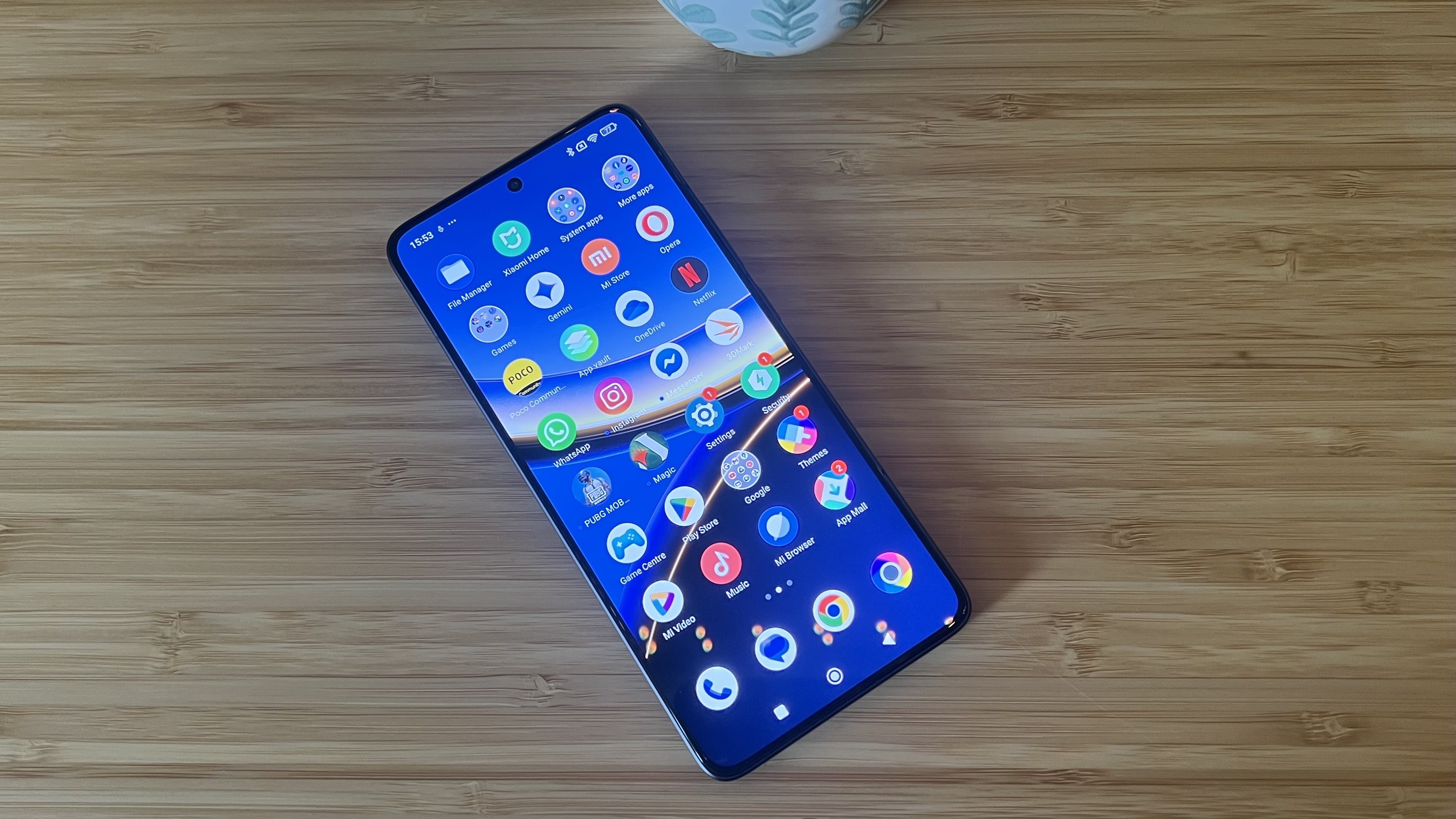
If you’re in a territory that supports it, the Poco F7 Pro offers excellent value as an all-in-one gaming phone. You’re not paying flagship prices here, and while there are some hardware and software sacrifices compared to high-end gaming phones, the Poco F7 Pro ticks all the boxes as far as everyday stability and gameplay goes.
With a gorgeous OLED screen that punches well above its price tag, a battery life to be jealous of, and a streamlined, subtle form factor, the F7 Pro can easily slot into your daily life while still giving your games a little more grunt than they may see from similarly priced Samsung Galaxy A-Series devices or Apple’s older releases.
How I tested the Poco F7 Pro
I used the Poco F7 Pro as my daily driver for two weeks, using it alongside the RedMagic 9S Pro and iPhone 15 Plus for an additional two weeks after that. I used the device as I normally would any phone for both of those two dedicated weeks of testing, noting battery life, any OS glitches or stutters, charge times, temperatures, and camera quality. On top of that, I performed more demanding battery tests running the phone with its screen at 50% brightness. I primarily played Magic: The Gathering Arena and PUBG during my gaming tests, but also stress-tested in Call of Duty Mobile and performed synthetic benchmarks across 3D Mark’s suite of tools.
For more information on how we make our recommendations, check out the full GamesRadar+ Hardware Policy.
We’re also rounding up all the best gaming tablets and the best gaming earbuds if you’re after more mobile play, or check out the best gaming handhelds for extra portable options.

